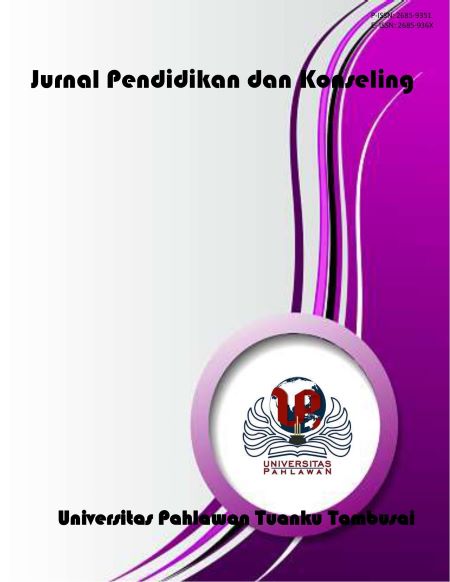Penerapan E-Learning Sebagai Inovasi Pendidikan Untuk Meningkatkan Kemampuan Berpikir Kritis Siswa
DOI:
https://doi.org/10.31004/jpdk.v4i4.5658Abstract
E-learning mampu memberikan kemudahan bagi siswa dalam mengakses dan mengambil informasi dengan cepat dan efektif. Oleh karena itu, lembaga pendidikan harus mampu mengantisipasi perkembangan tersebut dengan terus menerus mengupayakan suatu program yang sesuai dengan kebutuhan peserta didik. Maka dalam penerapannya perlu melakukan inovasi pendidikan, salah satu inovasi pendidikan dengan menerapkan e-learning (Elektronic Learning) merupakan cara baru dalam proses belajar mengajar yang menggunakan media elektronik, khususnya internet sebagai sistem pembelajarannya. Tujuan penelitian ini adalah untuk mengetahui penerapan e-learning yang dapat meningkatkan kempuan berpikir kritis siswa. Pengambilan sampel dengan teknik simple random sampling. Data penelitian berupa kemampuan berpikir kritis siswa diambil dengan teknik diskusi dan tes. Diskusi dinilai secara khusus berdasarkan keaktifan siswa dalam proses belajar dalam e-learning, sedangkan tes merupakan hasil dari pengguanaan e-learning siswa. Hasil tes diperoleh hasil 75% siswa memiliki kemampuan berpikir kritis dan 7,5% memiliki kemampuan sangat kritis. Simpulan penelitian ini yaitu bahwa penerapan e-learning dalam pembelajaran dapat meningkatkan berpikir kritis siswa secara efektif dan cepat. Kata Kunci: E-learning, Inovasi Pendidikan, Berpikir Kritis Abstract E-learning is able to make it easier for students to access and retrieve information quickly and effectively. Therefore, educational institutions must be able to anticipate these developments by continuously seeking a program that suits the needs of students. So in its application it is necessary to innovate education, one of the educational innovations by implementing e-learning (Electronic Learning) is a new way in the teaching and learning process that uses electronic media, especially the internet as a learning system. The purpose of this study was to determine the application of e-learning that can improve students' critical thinking skills. Sampling with simple random sampling technique. Research data in the form of students' critical thinking skills were taken with discussion and test techniques. The discussion is assessed specifically based on the activeness of students in the learning process in e-learning, while the test is the result of the students' use of e-learning. The test results showed that 75% of students had critical thinking skills and 7.5% had very critical abilities. The conclusion of this research is that the application of e-learning in learning can improve students' critical thinking effectively and quickly. Keywords: E-learning, Educational Inovation, Critical ThinkingDownloads
Published
2022-07-26
How to Cite
Miranda, A. Z., & Purnamaningsih, I. R. (2022). Penerapan E-Learning Sebagai Inovasi Pendidikan Untuk Meningkatkan Kemampuan Berpikir Kritis Siswa . Jurnal Pendidikan Dan Konseling (JPDK), 4(4), 1994–2000. https://doi.org/10.31004/jpdk.v4i4.5658
Issue
Section
Articles
License
Copyright (c) 2022 Azalia Zalfa Miranda, Ine Rahayu Purnamaningsih

This work is licensed under a Creative Commons Attribution-ShareAlike 4.0 International License.
Authors retain copyright and grant the journal right of first publication with the work simultaneously licensed under a Creative Commons Attribution-ShareAlike 4.0 International License that allows others to share the work with an acknowledgement of the works authorship and initial publication in this journal. Authors are able to enter into separate, additional contractual arrangements for the non-exclusive distribution of the journals published version of the work (e.g., post it to an institutional repository or publish it in a book), with an acknowledgement of its initial publication in this journal. Authors are permitted and encouraged to post their work online (e.g., in institutional repositories or on their website) prior to and during the submission process, as it can lead to productive exchanges, as well as earlier and greater citation of published work (See The Effect of Open Access).





.png)










